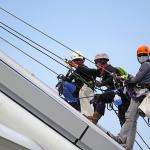
In Russia, every employer is required to regularly (at least once every five years) perform a compulsory workplace risk assessment. This is called a Special Evaluation of Working Conditions (the SOUT) procedure. The SOUT must be performed for each workplace operated by the employer (including workplaces where purely administrative or office tasks are being performed).l
SOUT involves carrying out the following measures:
- identification of potentially harmful and hazardous working conditions;
- examination and measurement of harmful and hazardous working conditions;
- classification of working conditions, depending on the level of harm or hazard they represent to human health, based on the evaluation results;
- reporting of the SOUT results.
In order to perform the Special Evaluation of Working Conditions (SOUT), the employer is required to take the following steps:
- to create the SOUT commission and SOUT schedule;
- to list the workplaces that must be evaluated;
- to choose and contract an organisation licenced to perform such evaluation;
- to accept and sign the documented results;
- to post the evaluation results on its website, if the employer has one;
- to report the evaluation results to the Social Insurance Fund of the Russian Federation;
- to inform its employees about the evaluation results;
- to submit a declaration to the state labour inspection for all workplaces where no harmful and no hazardous working conditions have been identified.
Selecting an Organisation to Run the SOUT
General requirements for organisations licenced to run the special evaluation of working conditions (the SOUT) are listed in Article 19 of the Federal Law N 426-FZ.
This organization is required to:
- be independent from the employer;
- have the special evaluation performance as its principal activity, according to the constitutional documents of the organisation.
- have at least 5 experts employed and licenced to run the SOUT. One of them has to have higher education in the area of Hygiene (General Hygiene, Occupational Hygiene or Hygiene Laboratory Testing). Requirements pertaining to the experts are listed in the Article 20 of the Federal Law N 426-FZ.
- have a test laboratory licenced to run the examinations on harmful and hazardous working conditions as a division entity of the organisation (according to the Paragraphs 1-11 and 15-23 of the Section 3 of the Article 13 of the Federal Law No. 426-FZ.
- be listed in the SOUT register and run operations.
The Ministry of Labour and Social Affairs of Russia (Mintrud) maintains the SOUT register. It is possible to visit the Mintrud official website and check whether a certain organisation is listed in the register of organisations licensed to perform the SOUT.
SOUT Execution Commission
The employer must create the commission responsible for the performance of SOUT. The number of the commission members must be an odd number. The employer decides who will be the commission members and what will the procedures for its operation. The SOUT experts from the chosen independent organisation cannot be the members of the employer’s commission.
Only the employer’s representatives may be a part of the commission. The commission has to include the following persons:
- an occupational safety expert; and
- a trade union leader.
The head of the commission has to be either the CEO or the person specially authorised by the employer. The trade union leader may be the signatory, as well, if authorized by a power of attorney: he may sign the SOUT results.
There are special rules for small enterprises. Their commissions have to include:
- the employer (the sole proprietor or the CEO)
- other authorized representatives;
- an occupational safety expert; and
- a trade union leader.
The SOUT Schedule
There are no strict rules regulating SOUT schedule and there is no prescribed form for this document. There is no prescribed timeframe for the SOUT either. This always depends on the number of the workplaces in the company that have to be evaluated, and working conditions present at these workplaces.
The schedule may be included into the full text of the internal order initiating the SOUT or may be attached as appendix or put into force by a separate order. The schedule defines the necessary deadlines and steps to be taken as a part of the SOUT procedure. All SOUT commission members have to read, accept and sign the schedule.
Identifying Workplaces to be Evaluated
The commission has to decide which workplaces are to be evaluated. To create the list, they have to write a document in a free form. Workplaces with similar conditions must be specified separately. According to the Paragraph 6 of the Article 9 of the Federal Law N 426-FZ, in order to come under the definition of “similar workplaces”, they have to:
•be located in industrial premises of the same type;
•have to be equipped with the conditioning, heating and illumination systems of the same type;
•be designated for employees of the same profession, specialisation and rank;
•operate the same technological processes or have the same occupational duties running in the same operating mode;
•have the same equipment, materials, and PPE used there.
If workplaces are identified as "similar", it is enough to run SOUT only for 20% of them (minimum for two). The results will be valid for the rest of the similar workplaces.
All similar workplaces are to be evaluated with the single SOUT scorecard, and for such workplaces the single list of measures aimed at the improvement of working conditions developments is to be developed.
If, while running the SOUT at least one workplace from those which were identified as “similar” earlier is discovered not to be similar, then the SOUT must be performed for all workplaces previously identified as “similar”. This requirement is imposed by Article 10 of the Federal Law N 426-FZ.
Identification and Classification of Harmful and Hazardous Working Conditions
Firstly, an expert from the independent organization develops the list of harmful and hazardous working conditions that are to be examined. By visiting the workplaces, that need to be evaluated, he or she identifies what kind of working conditions are actually present in the companyIf any of them match the list of the SOUT classification of harmful and hazardous working conditions, then they are to be evaluated (Paragraph 6 of the SOUT methodology)
Secondly, by the decision of the commission, working conditions selected for the evaluation must be tested and measured according to the SOUT methodology put into force by the order of the Ministry of Labour and Social Affairs of Russia (Mintrud) N 33n of 24 January 2014 (further to be called “the methodology”).
Finally, the expert ranks the workplaces by the harm or hazard levels, based on the data obtained as a result of tests and measurements and reports the results.
Working Conditions Classification
There are four classes of working conditions depending on the level of harm or hazard they represent:
Class 1: optimal working conditions. This is the class of working conditions with no harmful of hazardous factors, or with the factors not exceeding the safe limits of standard working conditions. The work environment in these conditions is considered to be safe and suitable for efficient work.
Class 2: acceptable working conditions. This is a class of working conditions with safe levels of harmful and hazardous factors. An employee’s body is considered to be able to recover itself before the next workday or shift.
Class 3: harmful working conditions. This is a class of working conditions where harmful of hazardous factors or exposure levels exceed the safe limits of standard working conditions. See following subclasses below.
Class 4: hazardous working conditions. This is a class of working conditions where harmful of hazardous factors at workplace pose risk to life or to the development of an occupational disease.
Class 3 of harmful working conditions is divided into the following subclasses:
subclass 3.1: 1st degree of harmful working conditions. This is a class of working conditions with such an impact of harmful factors that an employee’s body is not considered to be able to recover before the next workday or shift; therefore, at such workplaces there is a risk to the healthof the employee.
subclass 3.2: 2nd degree of harmful working conditions. This is a class of working conditions with harmful factors that are likely bring a light health disorder or lead to the development of an occupational disease of a low degree of severity (i.e. when after 15 years of employment the affected employee does not lose their working capacity).
subclass 3.3: 3rd degree of harmful working conditions. This is a class of working conditions with harmful factors that may bring a medium health disorder or lead to the development of an occupational disease of medium degree of severity (when employee loses their working capacity during the period of employment).
subclass 3.4: 4th degree of harmful working conditions. This is a class of working conditions with such harmful factors that may lead to the development of a professional disease of high degree of severity (when employee completely loses working capacity during the period of employment).
This classification is imposed by Order of the Ministry of Labour and Social Affairs of Russia (Mintrud) N 33n of 24 January 2014.
The expert of the independent SOUT organisation may assign a lower class to a workplace if the employee uses efficient PPE at such a workplace. The methodology and procedure for decreasing a workplace level was adopted by Order of the Ministry of Labour and Social Affairs of Russia (Mintrud) N 976n of 5 December 2014.
Reporting the SOUT results
When the SOUT is completed, the organisation that ran the evaluation will have to report the results. The form and filling instructions were adopted by Order of the Ministry of Labour and Social Affairs of Russia (Mintrud) N 33n of 24 January 2014.
The SOUT report is to be approved by the head of the employer’s commission and signed by all the commission members.
The SOUT report must contain:
- the information on the organisation that performed the SOUT;
- the list of workplaces that have been evaluated and any harmful or hazardous working conditions identified at such workplaces;
- SOUT scorecards;
- examination and measurement records;
- PPE efficiency testing records;
- the commission record on the impossibility to conduct examinations and measurements (if applicable);
- the SOUT summary table;
- the list of measures aimed at the improvement of working conditions;
- the conclusion of the expert performing the SOUT.
Note: there is no deadline set for the internal approval of the SOUT report by the employer. However, the employer must notify the organisation that has performed the SOUT on the employer's internal approval of the SOUT results, within three days. He may do this by either sending a signed copy by post or by sending a signed electronically by e-mail. These are the requirements of Paragraph 5.1 of Article 15 of the Federal Law N 426-FZ.





